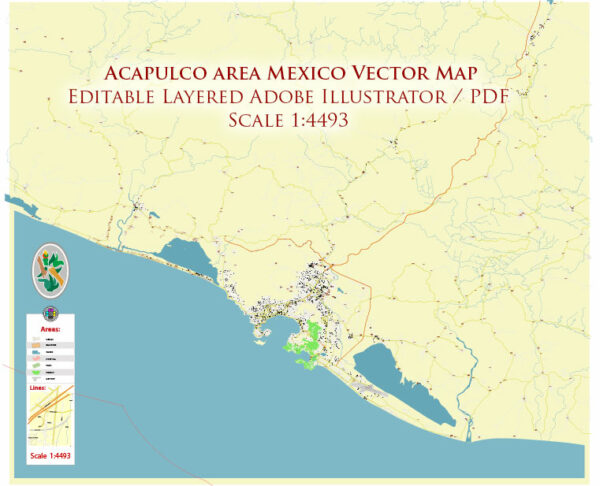The history of Acapulco, a popular resort city on the Pacific coast of Mexico, is rich and varied. The area’s history goes back centuries, with indigenous populations living in the region long before the arrival of European explorers and settlers. Here’s a brief overview of Acapulco’s history:
- Pre-Columbian Era: Acapulco’s history begins with the presence of indigenous peoples in the area, including the Nahuas and Yopes. These groups inhabited the region for centuries before the arrival of Spanish conquistadors. The area’s original name in the Nahuatl language was “Acapōlco,” which is believed to mean “place of big reeds” or “where the reeds were destroyed.”
- Spanish Conquest: In 1522, Spanish explorer Hernán Cortés arrived in Acapulco during his exploration of the Pacific coast. The natural bay of Acapulco, with its deep and sheltered harbor, caught the attention of the Spanish, and they established a small trading post there.
- Trade and Commerce: Acapulco became an essential port for the Spanish Empire during the early colonial period, as it was a strategic point for trading goods between Mexico and Asia. The city played a vital role in the trans-Pacific trade route known as the Manila-Acapulco Galleon Trade, which connected Mexico to the Philippines, China, and other parts of Asia.
- Pirate Attacks: Due to its significance as a trade hub, Acapulco was a target for pirates and privateers during the 16th and 17th centuries. The Spanish built forts and defensive structures to protect the city from these attacks.
- Mexican Independence: Acapulco, like the rest of Mexico, gained its independence from Spanish colonial rule in the early 19th century. The city’s historical importance as a trade port diminished over time, but it remained a popular destination for travelers.
- Tourism: Acapulco’s transformation into a major tourist destination began in the 20th century. Hollywood stars and international visitors flocked to its sandy beaches, luxury resorts, and vibrant nightlife. The city’s reputation as a glamorous destination continued to grow throughout the mid-20th century.
- Modern Era: In recent years, Acapulco has faced challenges, including issues with crime and violence. While these problems have impacted the city’s tourism industry, efforts have been made to revitalize and modernize the area’s infrastructure and security.
Today, Acapulco remains a popular tourist destination known for its beautiful beaches, water sports, and cultural attractions. Its history as a strategic trading post and its evolution into a vibrant resort city have left an indelible mark on the region, making it a unique and historically significant destination in Mexico.


 Author: Kirill Shrayber, Ph.D.
Author: Kirill Shrayber, Ph.D.